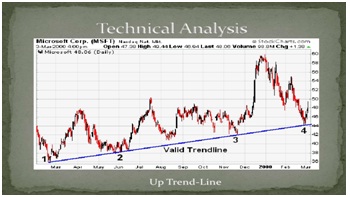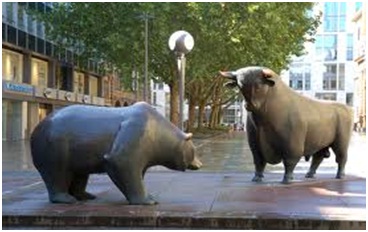Beginners Guide
In Review
01. SEBI, BOMBAY STOCK EXCHANGE (BSE)
02. NATIONAL STOCK EXCHANGE (NSE)
03. What are stocks? Why do companies issue stock?
04. What’s an IPO ? What does the shareholder get out of the deal?
05. What is Common, Preferred stocks and Market Capitalization?
06. What is a dividend, Bonus, Split and Buyback?
07. What is Intraday and Delivery? Difference between Cash and Future segments?
08. What are options? Short Selling?
09. When to invest in a particular stock?
10. What else might influence the price of a stock?
11. What are these animals?
12. Importance and role of the Stocks Markets ? Who are the investors?
13. What is Commodity / Currency Market?
SEBI, BOMBAY STOCK EXCHANGE (BSE)
ESTABLISHMENT OF SEBI
The Securities and Exchange Board of India was established on April 12, 1992 in accordance with the provisions of the Securities and Exchange Board of India Act, 1992.
PREAMBLE
The basic functions of the Securities and Exchange Board of India as "... to protect the interests of investors in securities and to promote the development of, and to regulate the securities market and for matters connected therewith or incidental thereto"
BSE’s popular equity index - SENSEX
Established in 1875, BSE Ltd. (formerly known as Bombay Stock Exchange Ltd.), is Asia’s first Stock Exchange and one of India’s leading exchange groups. More than 5000 companies are listed on BSE making it world's No. 1 exchange in terms of listed members. The companies listed on BSE Ltd command a total market capitalization of USD 1.32 Trillion as of January 2013.
Group Companies
- CDSL
- ICCL
- BSE Institute Ltd
- Marketplace Technologies
NSE’s popular equity index - NIFTY
The National Stock Exchange (NSE) is India's leading stock exchange covering various cities and towns across the country. NSE was set up by leading institutions to provide a modern, fully automated screen-based trading system with national reach.
EQUITIES :
- Equities
- Indices
- Mutual Funds
- Exchange Traded Funds
- Initial Public Offerings
- Security Lending and Borrowing Scheme
DERIVATIVES:
- Equity
- Currency
- Interest Rate
- Futures
DEBT:
- Retail Debt Market
- Wholesale Debt Market
- Corporate Bonds
What are stocks?
A stock is a share in the ownership of a company. Stock represents a claim on the company’s assets and earnings.
Ownership of shares is documented by a legal document that specifies the amount of shares owned by the shareholder, and other specifics of the shares, such as the par value or the class of the shares (if any)
These days these stock certificates have been dematerialized (No Physical document!)
As an owner (shareholder), you are entitled to your share of the company’s earnings as well as any voting rights attached to the stock.
Why do companies issue stock?
At some point every company needs to raise money to invest in new projects or expansions. Companies can either borrow it from somebody or raise it by selling part (up to 49%) of the company.
By issuing stock (going to IPO), the company does not have to pay back the money or make interest payments.
What’s an IPO?
Applying for Stocks through IPO is known as Primary market. The stock exchange itself is a Secondary market.
IPO stands for Initial Public Offering. It’s the first time the stock is available to the public to purchase.
IPO Process
Pre-IPO transformation phase:
When a company goes public though an initial public offering (IPO), an investment bank evaluates the company's current and projected performance and health to determine the value of the IPO for the business. The bank can do this by comparing the company with the IPO of another similar company, or by calculating the net present value of the firm. The company and the investment bank will meet with investors to help determine the best IPO price through a series of road shows. Finally, after the valuation and road shows, the firm must meet with the exchange, which will determine if the IPO price is fair.
IPO transaction phase :
The key issue with this step is to maximize investor confidence and credibility to ensure that the issue will be successful.
Post-IPO transaction phase:
This phase is typically a very long phase, because this is the point in time where companies have to go and prove to the market that they are a strong performer that will last. The shareholder gets the hope that the shares will be worth more in the future.
What does the shareholder get out of the deal?
If the company does well, the stock will probably increase in value. If the company does not do well, the Shareholder may lose the money he or she invested.
What is the difference between common and preferred stocks?
Common stock is the type most people purchase. It represents ownership of a company and a claim on part of the profits. Investors get one vote per stock.
Preferred stocks don’t have the same voting rights, but investors are usually guaranteed a fixed dividend. If the company is liquidated, they are paid off first.
What is the Market Capitalization?
We often hear companies or different mutual funds being categorized as small cap, mid cap or large cap. But what do these terms really mean? The "cap" part of these terms is short for capitalization, which is a measure by which we can classify a company's size.
Market Capitalization - is the market value of a company's outstanding shares. This figure is found by taking the stock price and multiplying it by the total number of shares outstanding. For example, if bigasa company trading at Rs 200/- per share and had a 10 Cr shares outstanding, then the Market Capitalization would be 2000 Cr (Rs 200/- x 10 Cr shares).
What is a dividend, Bonus, Split and Buyback?
A dividend is money that a company pays to its stockholders from the profits it makes.
Bonus is another case where the shareholder is rewarded. In a stricter sense the Bonus issue should not impact the share price but in reality, in rare cases, it does and results in an overall increase in value.
If the price of a stock is too high or too low, the liquidity of the stock suffers. So respectively Corporate actions such as stock splits or reverse stock splits will be done. Stocks priced too high will not be affordable to all investors and stocks priced too low may be de-listed.
Buybacks are another example of influencing the stock price where a corporation buys back shares from the market in an attempt to reduce the number of outstanding shares thereby increasing the price.
What is Intraday and Delivery?
In Intraday trading you buy and sell the same day without actually getting the shares in your account. --Settlement will be done on same day
Delivery based trading means that you actually get the stocks you buy and then can sell whenever you want to... --Settlement will be done on T+2 basis
Difference between Cash and Future segments?
In the cash segment, one can pick up as many shares one wants starting from just one share. In Futures, a trader cannot buy less than the lot size prescribed. If required to buy more trader can but it must be in multiples of the lot.
Future segments : INDEX, STOCKS, COMMODITIES like GOLD, SILVER, COPPER, NATURAL GAS etc… and CURRENCY.
What are options? Short Selling?
Options are of two types, the buying option is called the Call option while the selling option is the Put option.
The price of an option is the option premium. The price at which the underlying security can be bought or sold is called the Strike price.
Strike Price: The contract contains a specific price that is called as the strike price or exercise price.
In the money option: The current index price is higher than the strike price.
At the money option: The index price is exactly equal to the strike price
Out of the money option: The index price is less than the strike price
Short Selling:
Short selling is a trading strategy. The selling of a security in intraday that the seller does not own. Short sellers assume the risk that they will be able to buy the stock at a lower price, cover the outstanding short, and realize a profit from the difference.When to invest in a particular stock?
Fundamental analysis refers to analyzing companies by their financial statements found in SEC filings, business trends, general economic conditions and the growth prospects of company’s market segment. A few parameters which are looked upon include Price to Earnings (PE) Ration, Price to Book Value ration, Equity to Debt ration.
The most important factor that affects the value of a company is its earnings. Earnings are the profit a company makes. Public companies must report their earnings on a quarterly basis. If a company has done well, the stock price will likely rise. If not, it will drop.
P/E Ratio = Price per Share / Annual Earnings per Share
P/B Ratio = Market capitalization / (Tangible assets – liabilities)

Technical analysis studies price actions in markets through the use of charts and quantitative techniques to attempt to forecast price trends regardless of the company’s financial prospects. A few examples include Trend lines, Bollinger Bands, Oscillators etc..
What else might influence the price of a stock?
Often times current world events have an impact on the price of stocks.
Country Election results, Budget timings, attacks etc..

And For example, after 9/11, aviation stocks decreased in value. This was in anticipation of a drop in traveling by the consumer and thus a decrease in profits. This caused a lot of trouble for those companies.
What are these animals?
The Bull – a bull market is when the economy is doing well, the GDP is growing and stock prices are rising. The bull market charges ahead.

The Bear – a bear market is when the economy is bad, recession is looming and stock prices are falling. A bear market hibernates and moves slowly.
Importance and role of the Stocks Markets ?
- Raising capital for businesses
- Government capital-raising for development projects
- Mobilizing savings for investment
- Facilitating company growth through acquisitions
- Creating investment opportunities for small investors
- Finally Barometer of the economy
Who are the investors?
- An individual
- In the name of company/form/trust etc...
- All mutual funds
- All insurance companies
- All banks
- FII’S (Foreign Institutional Investors) & DII’S (Domestic Institutional Investors)
What is Commodity Market?

COMMODITY MARKET – Indian markets have thrown open a new avenue for retail investors and traders to participate: commodity derivatives. For those who want to diversify their portfolios beyond shares, bonds and real estate, commodities are the best option.
Commodities are more than what you think they are. Almost everything you see around is made of what market considers commodity. It could be any kind of movable property, except actionable claims, money and securities. Commodity trade forms the backbone of world economy.
Commodities offer immense potential to become a separate asset class for market-savvy investors, arbitrageurs and speculators and are easy to understand as far as fundamentals of demand and supply are concerned.
Like any other market, the one for commodity futures plays a valuable role in Price Discovery and Price Risk Management.
What is Currency Market?

CURRENCY MARKET – The global increase in trade and foreign investments has led to many national economies becoming interconnected with one another. This interconnection, and the resulting fluctuations in exchange rates, has created a huge international market: FOREX. For many investors, this has created exciting opportunities and new profit potentials.
FOREX - market offers unmatched potential for profitable trading in any market condition or any stage of the business cycle.
The currency futures market in India is set to witness a rapid and exponential growth in coming years!



